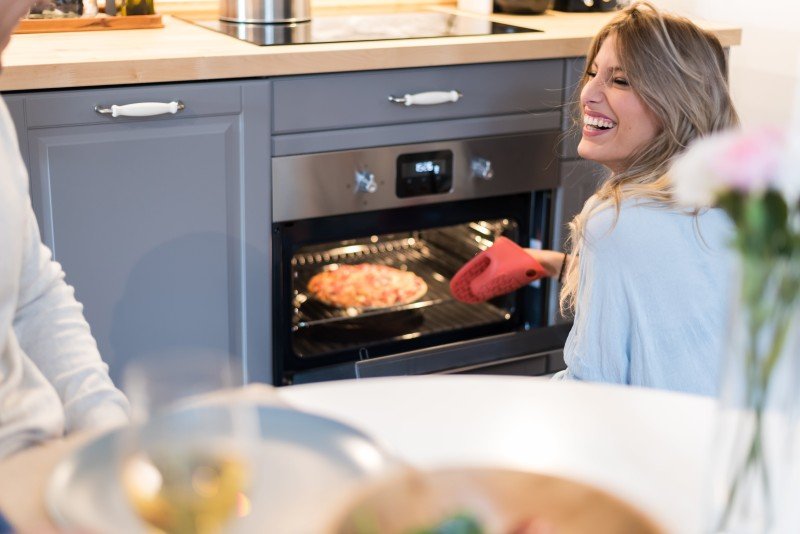
Ovens Sales
FollowOverview
-
Sectors Architecture
-
Posted Jobs 0
Company Description
Ten Hob And Ovens That Really Improve Your Life
Understanding Cooker Hobs and Ovens: A Comprehensive Guide
In modern kitchens, cooker hobs and ovens are fundamental home appliances that define cooking routines and choices. Choosing the ideal mix of these devices can substantially boost cooking experience, improve effectiveness, and even raise home aesthetics. This post will check out numerous elements of cooker hobs and ovens, clarifying types, functions, benefits, and maintenance pointers, while also resolving common inquiries.
Kinds Of Cooker Hobs
Cooker hobs are available in different types, each with distinct functions accommodating different cooking styles. Here’s a summary of the most common types:
| Type | Description | Pros | Cons |
|---|---|---|---|
| Gas Hob | Utilizes gas burners for heating; deals instant temperature control. | Immediate heat and exceptional control. | Needs a gas connection; might be less safe. |
| Electric hob And Ovens | Runs utilizing electric coils or smooth surface; heats up gradually. | Even heat distribution; easy to clean. | Takes longer to heat up; less control. |
| Induction Hob | Uses magnetic fields to heat pots straight, making it energy effective. | Quick cooking; energy-efficient. | Needs suitable pots and pans; more pricey. |
| Halogen Hob | Uses halogen bulbs for immediate heat; offers instant temperature modification. | Incredibly quickly heating; visible heat. | Consumes more power; may not uniformly heat. |
Selecting the Right Hob
When selecting a hob, think about the following aspects:
- Cooking Style: Do you choose the accuracy of gas, the convenience of electric, or the effectiveness of induction?
- Pots and pans Compatibility: Ensure your pots and pans work with the type of hob.
- Kitchen Layout: Space and style typically dictate the sort of hob that matches your kitchen.
Kinds of Ovens
Similarly, ovens have evolved considerably, offering various cooking approaches that can complement particular cooking styles. Here are the widespread types of ovens:
| Type | Description | Pros | Cons |
|---|---|---|---|
| Standard Oven | Standard baking oven that uses electric or gas heat from the top and bottom. | Versatile; excellent for baking. | Longer preheat and cooking times. |
| Stove | Utilizes a fan to circulate hot air, permitting even cooking and quicker baking times. Distributes heat uniformly. | Faster cooking; even browning. | Somewhat more expensive; might dry food out. |
| Steam Oven | Cooks food using steam, preserving nutrients and wetness. | Healthier cooking; keeps food taste. | Takes longer to prepare; more costly. |
| Microwave | Utilizes electro-magnetic radiation to heat food quickly. | Instant cooking; perfect for reheating. | Limited cooking approaches; may impact texture. |
Picking the Perfect Oven
When choosing an oven, keep these consider mind:

- Cooking Habits: Are you a frequent baker or more likely to reheat leftovers?
- Space Requirements: What are the measurements of your kitchen?
- Spending plan: Consider not simply the purchase rate however likewise energy effectiveness with time.
The Importance of Cooker Hobs and Ovens in Cooking
The ideal combination of cooker hob and oven can improve cooking skills, enabling food lovers to experiment and develop a large range of meals. Here are a couple of reasons why these devices are essential:
- Efficiency: Modern hobs and ovens come with features that enhance cooking times and energy usage.
- Versatility: Different cooking approaches (bake, grill, roast, steam, and so on) expand the series of dishes one can prepare.
- Aesthetic Appeal: Stylish designs can elevate the overall look of a kitchen, making it both practical and welcoming.
Regularly Asked Questions (FAQs)
1. What maintenance do cooker hobs and ovens require?
- Regular cleaning after use to prevent accumulation.
- Regular checks for gas leaks (for gas hobs).
- Making sure the electrical connections are protected.
2. Can I utilize any cookware on an induction hob?
No, induction hobs need ferrous cookware (i.e., magnetic) to operate. This suggests stainless steel and cast iron work, while glass and aluminum pots might not.
3. How do I determine the ideal size oven for my kitchen?
Procedure your offered area and consider the volume of cooking you normally perform. Requirement ovens vary in size, and bigger designs normally have additional features.

4. Are convection ovens much better than standard ovens?
It depends on personal choice. Convection ovens use faster and more even cooking however may not be ideal for all baking recipes, particularly those requiring particular temperatures.
5. What is the average lifespan of a cooking hob and oven?
With appropriate care, both hobs and ovens can last anywhere from 10 to 20 years, depending upon frequency of use and maintenance.
Picking the right cooker hob and oven not just simplifies the cooking process however can also redefine one’s cooking experience. Comprehending the different types, their advantages, and maintenance will empower customers to make educated decisions, guaranteeing that their kitchen is geared up to deal with meals from the simplest to the most intricate. Knowledge about the abilities of these vital home appliances enables cooking creativity and performance, ultimately resulting in a more satisfying cooking journey.
